Every garden has its quiet companions — the bees that hum at dawn, the earthworms that turn the soil, and the frogs that keep the balance when night falls. They may go unseen, yet they’re the reason our gardens stay alive and pest-free. Frogs are more than visitors; they’re part of the garden’s heartbeat — silent, humble, and essential.
But modern backyards don’t always make it easy for them. Paved corners, tidy lawns, and chemical sprays leave few safe, damp spots to hide. That’s where a frog hotel comes in. It’s a simple, low-cost way to give these beneficial creatures a cool shelter they can call home — especially through dry days or harsh summers. With just a few materials and thoughtful placement, you can create a refuge that keeps them protected and active in your garden.
Think of it as returning a small favor to nature — for every mosquito a frog eats, for every slug it saves your seedlings from. In the next sections, you’ll learn how to build one step by step, where to place it, and how to make it blend beautifully into your garden’s rhythm.
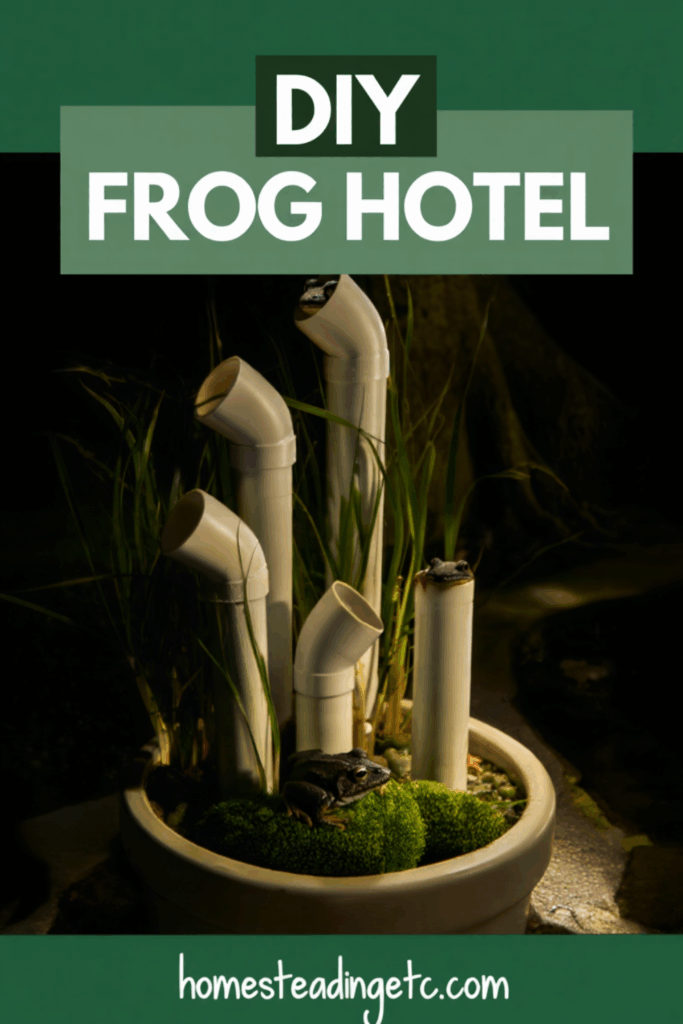
WHY FROGS MATTER IN YOUR GARDEN
Croak… croak… — that gentle sound slipping through the evening air is more than background noise; it’s a sign your garden is breathing. It comes from somewhere near the damp soil, the compost pile, or under a shaded pot — a quiet reminder that life here still moves in rhythm with nature. Frogs only settle where the air stays clean, the soil holds moisture, and the balance of life feels right.
They’re tireless little helpers, feeding on mosquitoes, slugs, and beetles each night — the same pests gardeners spend hours trying to control. But in many backyards today, that harmony is fading. Smooth pavements, trimmed lawns, and harsh sprays have left fewer safe corners for frogs to rest. The silence where their calls once echoed feels subtle, yet every gardener who listens long enough can sense what’s missing.
For gardeners who value life over appearance, bringing frogs back is an act of quiet care — not just for them, but for the garden itself. Because when a frog settles under a pot or hops through damp mulch, it means your little patch of earth has turned into a home again — not just for plants, but for life in all its humble forms.
BEFORE YOU BUILD: UNDERSTANDING WHAT FROGS NEED
Before gathering materials, think like a frog. Their comfort depends on just a few essentials:
That’s all they really need — a cool, moist corner that feels safe.
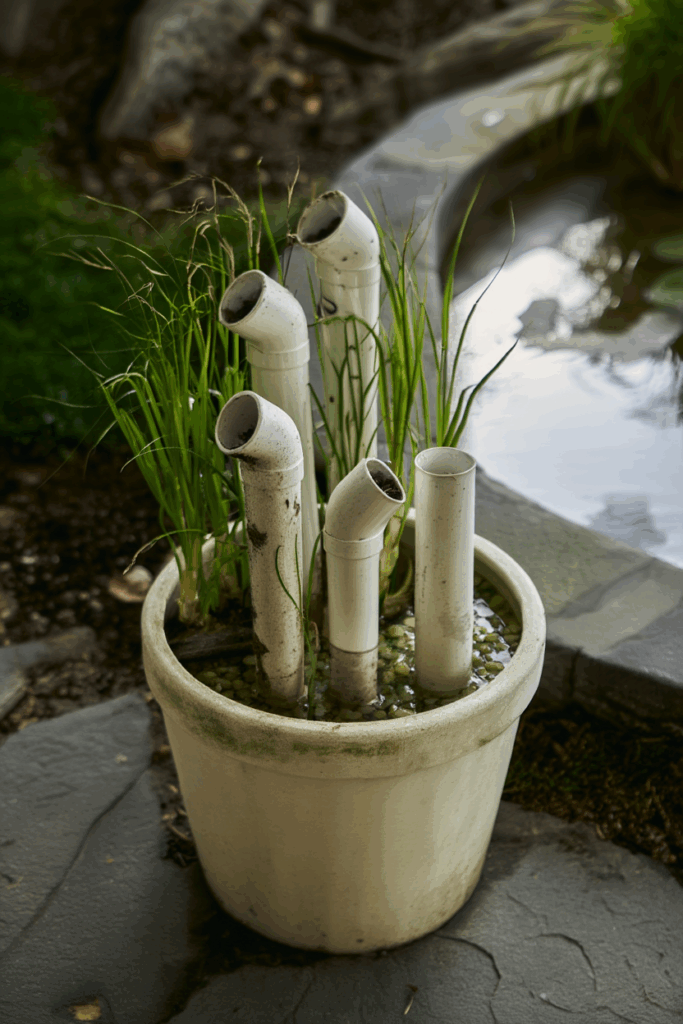
WHAT YOU’LL NEED: MATERIALS & TOOLS
You don’t need anything fancy to build a frog hotel — most of these items might already be lying around your garden shed. Just make sure whatever you use is natural, non-toxic, and safe for wildlife.
Main Structure
Natural Additions
Tools (optional)
Optional Eco Alternatives
💡 Tip: Avoid treated wood, painted materials, or anything with chemical residue — frogs absorb substances directly through their skin.
HOW TO BUILD YOUR FROG HOTEL
Building a frog hotel isn’t about perfection — it’s about recreating the kind of cool, sheltered corner frogs naturally seek.
Follow these simple steps to make a lasting refuge that works in almost any garden.
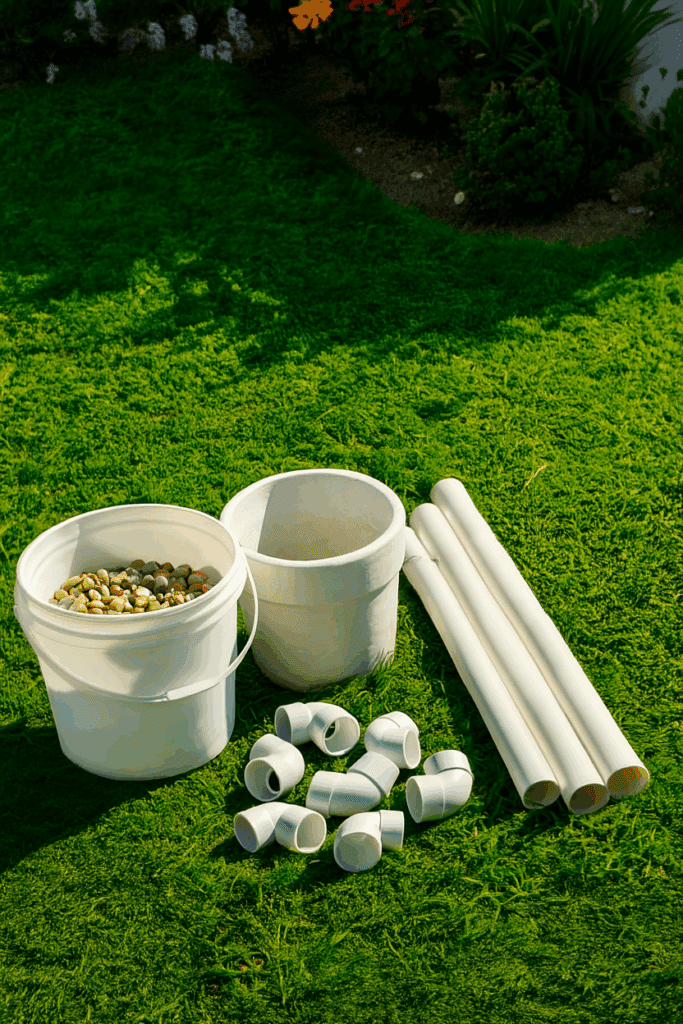
1. Prepare the Base & Materials
Start with a large pot about 38 cm wide and 19 cm deep — terracotta or sturdy ceramic works best because it stays cool.
If your pot has a drainage hole, seal it to keep water inside; frogs prefer a humid, stable base rather than fast drainage.
Spread a 2–3 cm layer of gravel or small river stones at the bottom for stability and natural texture.
Pour in enough dechlorinated water so that it just reaches the top of the gravel — the surface should glisten but not flood. This thin layer will keep humidity constant and let frogs find moisture without submerging the tubes.
Gather tubes of different diameters (25 mm – 90 mm) and around 10–15 cm long, made from PVC, bamboo, or terracotta.
Group the pipes together in clusters — the variety helps both small and large frogs choose a snug hiding spot.
If you’re using PVC, make sure it’s unpainted or coated only with non-toxic, wildlife-safe paint, since frogs absorb substances through their skin.
2. Arrange & Stabilize the Tubes
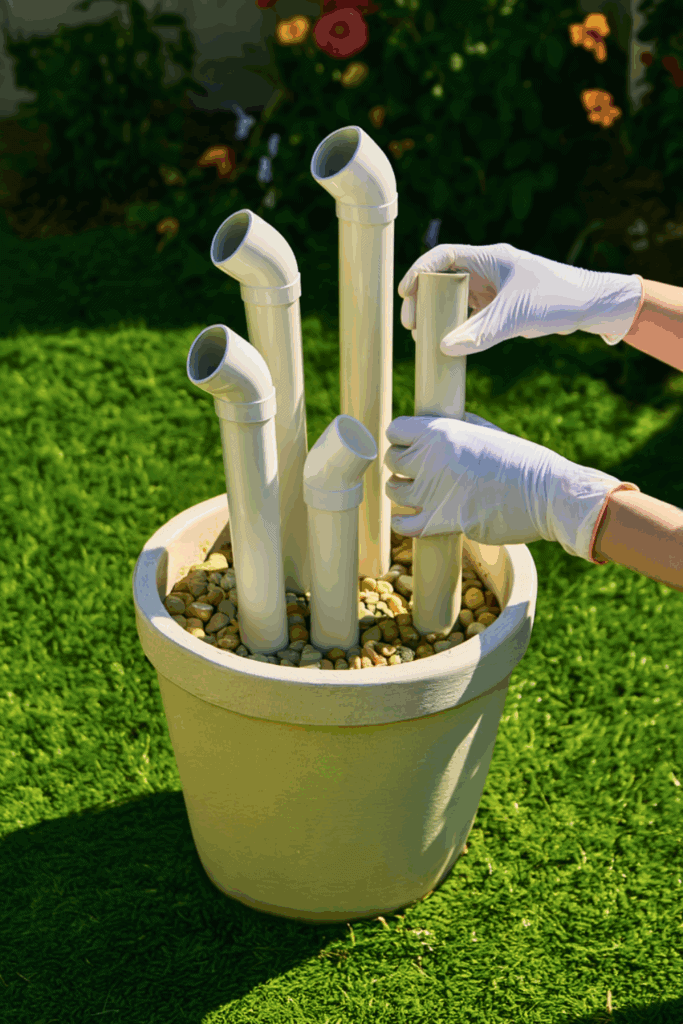
Place the tubes upright inside the pot, inserting 45° PVC elbow jointers at the top to create shaded entrances and prevent direct rainwater from entering.
Angle some tubes slightly upward for better drainage and variety.
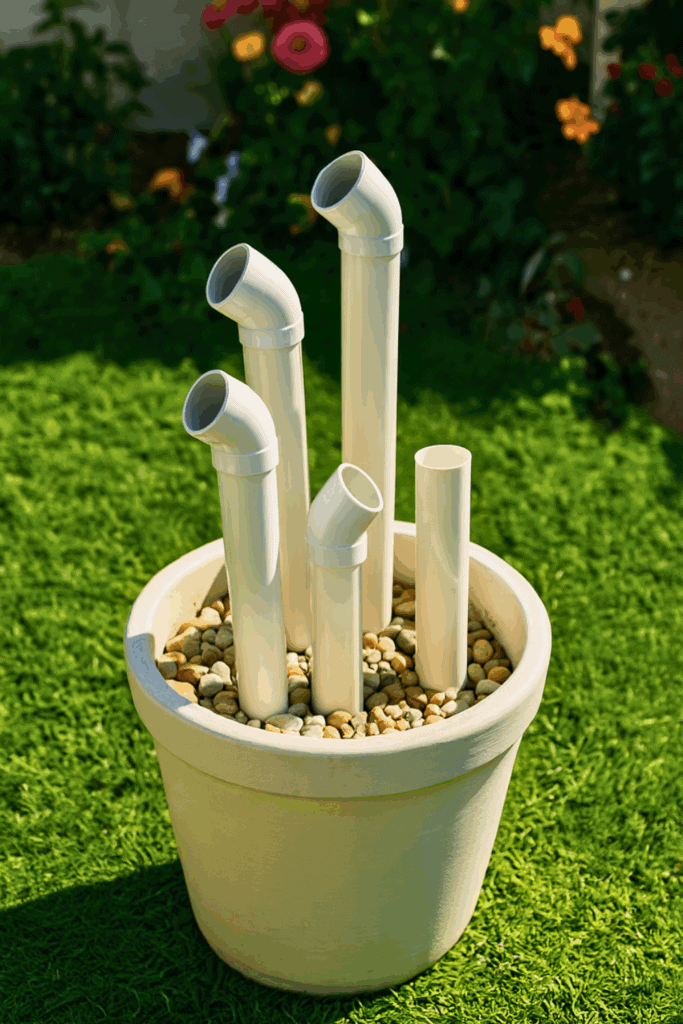
Use gravel or small pebbles around them to hold each pipe securely in place — the gravel should reach roughly halfway up the pipes.
Make sure there are small gaps between tubes for air flow and easy movement.
If you want extra stability, wedge stones between pipes or seal a few points lightly with aquarium-safe silicone.
Keep the openings smooth and clean so frogs can slide in easily without injury.
3. Blend It Into the Garden
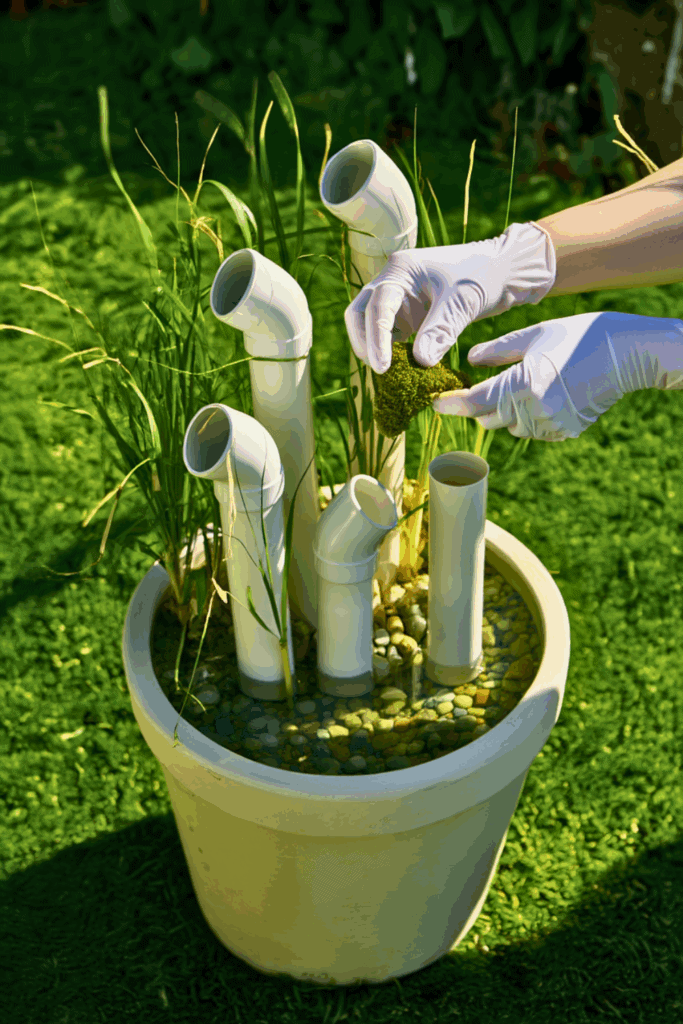
Once your pipes are stable, blend the pot naturally into the garden.
Tuck moss, bark, and fallen leaves around the base so it looks like part of the landscape instead of a new object — this makes frogs feel secure when they explore near it.
Set the hotel in a cool, shaded spot near water — beside a pond, under dense plants, or close to your compost corner where humidity stays high.
Keep the surrounding soil damp but not muddy, and avoid full sun that could overheat the pot.
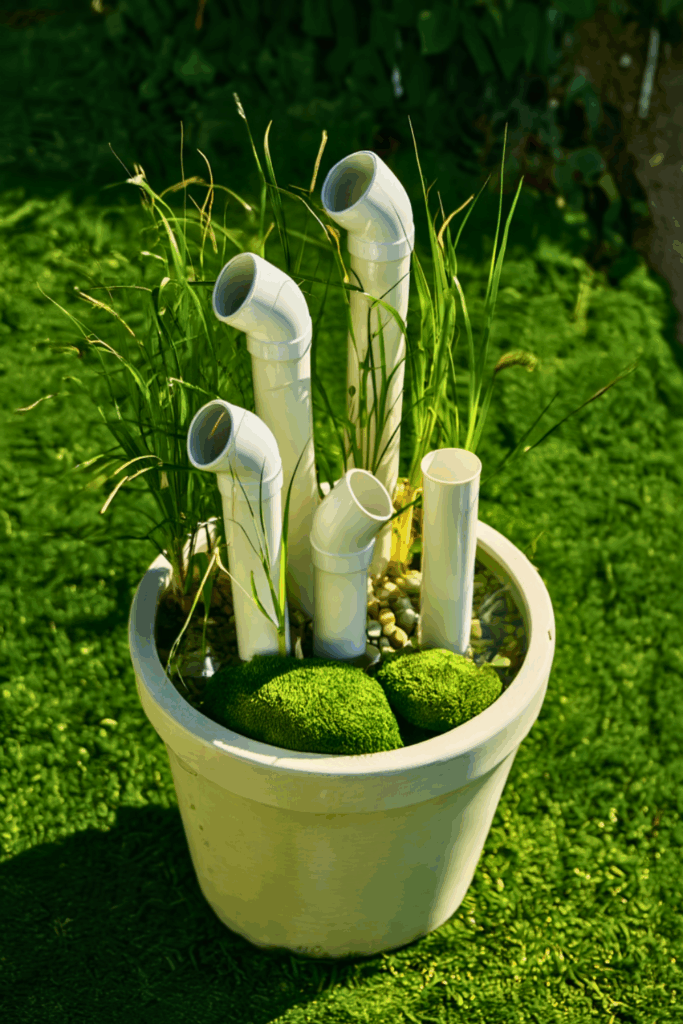
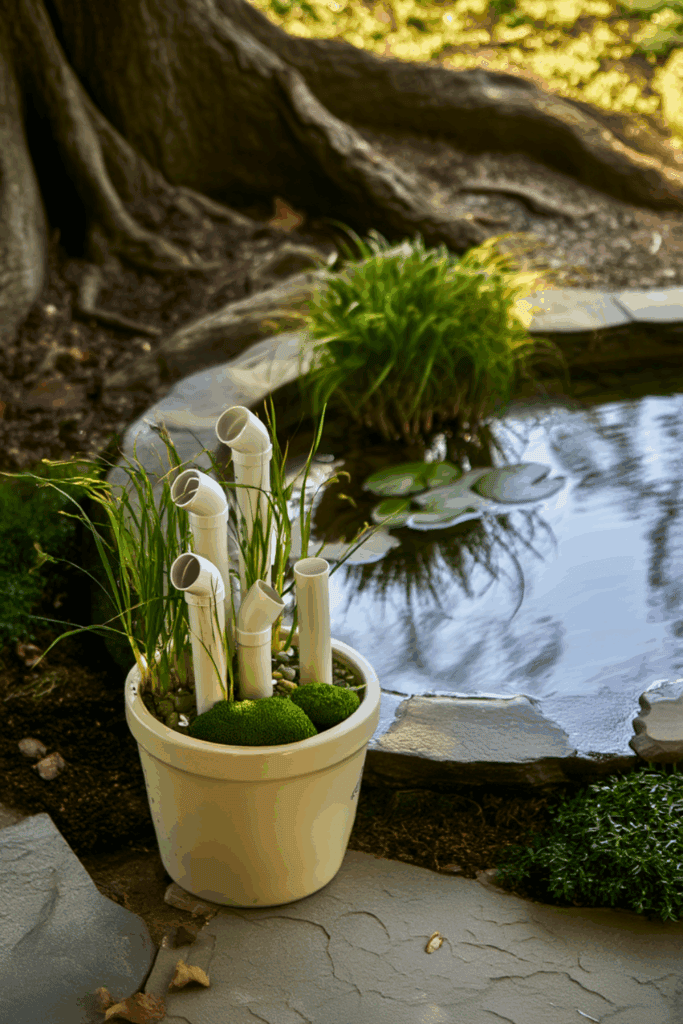
Do not cover the top; frogs prefer open entry and natural ventilation. Let nearby plants provide shade and protection. Over time, moss and soil will settle naturally, helping the hotel blend beautifully into its environment.
Seasonal Care
Top up water occasionally so the level always touches the gravel surface — this keeps humidity steady inside the pipes. Every few weeks, flush and refill the base water to prevent stagnation or mosquito larvae.
Avoid chemicals or pesticides near the setup — frogs breathe and absorb moisture through their skin, making them sensitive to residues. If you decorate or paint the pipes, use only non-toxic, water-based paint. When cleaning, wait until the setup is dry and wipe gently; avoid soaps or detergents.
In hot weather, keep the surroundings damp by misting the base or adding mulch nearby. In winter, move the pot to a sheltered corner or add leaf litter around it to buffer against frost.
Over time, moss and natural debris will make the frog hotel look more settled — a quiet, living part of your garden that returns life every rainy night.
Why Snakes Might Visit — and Why You Don’t Need to Panic
Snakes and frogs share the same kind of spaces — damp soil, shade, and quiet corners. So when you build a frog hotel, it’s fair to wonder if snakes might come too.
They sometimes follow food or warmth, especially in messy areas where grass grows tall or debris collects. A neglected spot with still water, stacked pots, or hidden gaps can feel perfect to them.
But in a tended garden — where things stay open, moist, and cared for — that risk drops close to zero. A frog hotel made right invites balance, not danger.
How to Deter Snakes (Without Losing Frogs)
Waiting for Our Amphibian Guests
Now comes the quiet part — waiting. It might take days, or even a few rainfalls, before the first visitor appears. But the wait is worth it. The frogs will come when the air feels right, when the nights are damp and still, and when your garden starts to sound alive again.
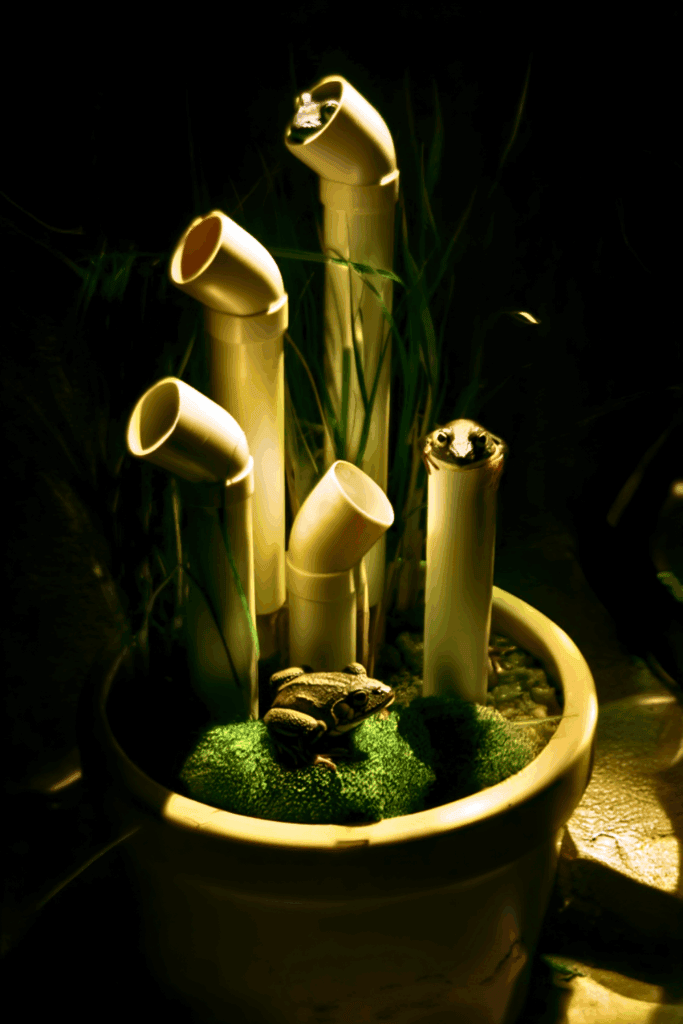
On humid evenings, listen for that low croak near the soil or see a flash of movement among the pipes — small signs that nature has accepted your invitation. When they finally move in, you’ll know every handful of gravel, every drop of water, every bit of shade was part of something larger — a space reclaimed for life.

